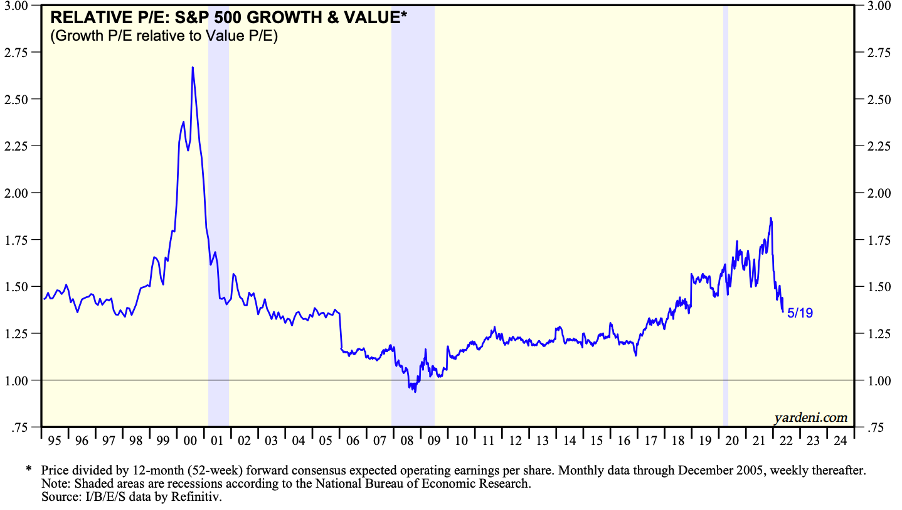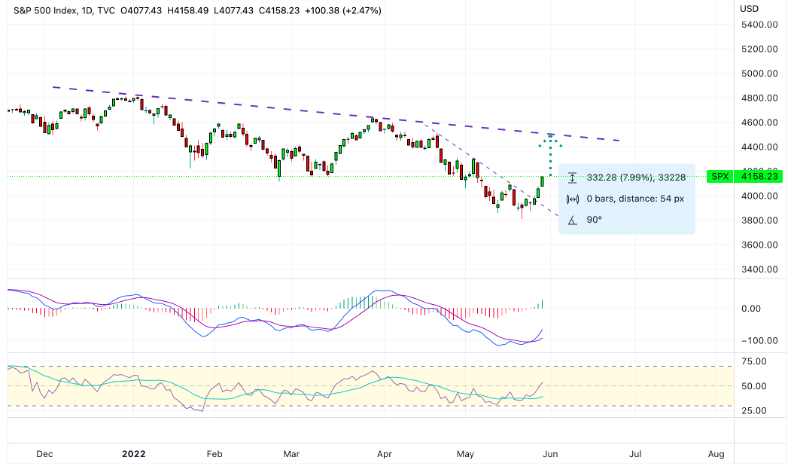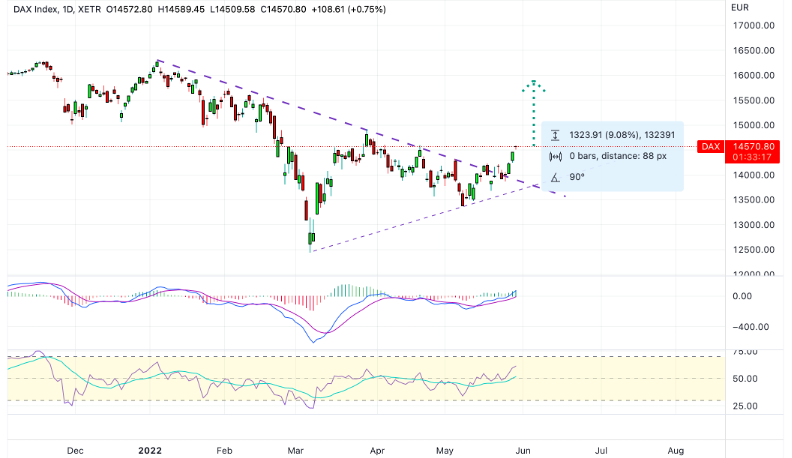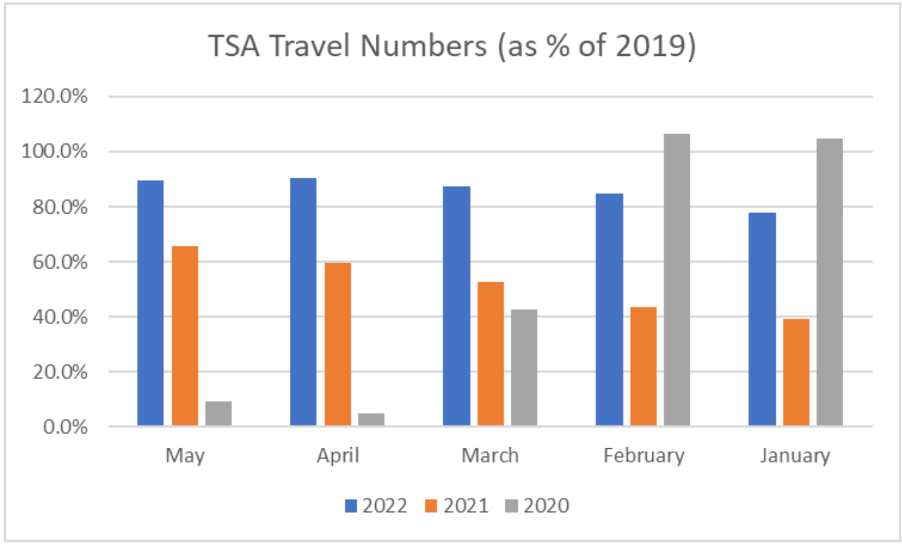- Are we really in the bear market territory? A question pondered by most market participants, but only a few can answer correctly.
- When attempting to diagnose recessions, it’s necessary to implement a multi-faceted approach. Incorporating both top and bottom-down analyses to ensure data of key importance is not overlooked.
- Major trend reversals are rarely driven only by one factor. Instead, a combination of factors influences the outcome. This means that mixed signals, as currently seen, are the perfect scenario for contrarian investors to shine.
Often, investors discussing “bear market territory” think in terms of technical moves, focusing on the drawdown percentage (i.e., >20% decline from recent highs). However, experience has demonstrated that bear markets are not accurately characterized via percentage point declines. Proceeding the pandemic driven -35% decline in the S&P 500, investors buying the dip were rewarded handsomely, with double-digit yields, despite the technical picture indicating the market was in bearish territory.
Bear markets, their intensity, and duration can only be truly gauged by delving deeper into real economy metrics, combined with changes in investor sentiment. The catalysts driving bears range from slowing economic activity, market bubbles bursting, pandemics, geopolitical tensions, wars, and institutional intervention (i.e., fiscal/monetary policy shifts).
Prolonged declines in valuations across most asset classes and a reduction in investor risk appetite are key signs of bear trend formation.
The Top-Down View

Recently, the economic environment exhibited several signs of recessionary pressures, with the real drawdown depth remaining a mystery. The only two asset classes that remain largely unaffected by the broad sell-off are energy companies and commodities. Paradoxically, while the US Consumer Confidence Index (CCI) remains above its 5yr average, Michigan’s Consumer Sentiment declined near 5yr lows.
Consumer Confidence focuses more on employment and the labor market, thus reflecting consumer feelings towards the overall economy. Consumer sentiment focuses more on individual household finances, reflecting consumer perceptions of their circumstances.

By and large, the divergence between the two consumer health indicators isn’t uncommon over short timeframes. However, Michigan’s Consumer Sentiment is widely accepted as the most trustworthy indicator of the two, implying consumer sentiment has turned bearish. Yet, recent earnings from big banks and travel and leisure companies have highlighted consumer strength.
Conversely, big retailers (i.e., Walmart (NYSE:WMT), Costco (NASDAQ:COST), Target (NYSE:TGT)) have highlighted weakening growth, a view supported by broad macroeconomic indicators.
UBS Americas CIO Marcelli explained the situation, saying,
“It is clear that inflation has a varying impact on different kinds of consumers. For lower-income households, higher rent, food, and energy prices mean having to cut back on discretionary purchases. But homeowners sitting on a ton of equity may be less sensitive to rising prices of home improvement tools.”
The Bottom-Down View
As a rule of thumb, companies’ fundamentals are linked but not fixed to real economic performance. The real question is what industries are favored by the top-down outlook, and what companies hold the most value?
Rationalizing investment decisions requires close examinations of macro and micro-economic catalysts and not subjective judgments based on percentage declines. While financial experts recognize fundamental models are ineffective for market-timing, they’re utilized successfully to pinpoint valuation anomalies.
As the year began, it was clear that significant valuation anomalies formed in equity markets. Although not uncommon for growth equities to trade at higher multiples relative to value equities, FY22’ started with the widest price-to-earnings ratio divergence recorded since the dot-com bubble.
Once more, the valuation anomaly was observed predominantly in the information technology sector and has been partially rectified by the recent market sell-off. US equities now trade at more reasonable valuations, with several companies trading considerably below current fair value and future growth. The only companies expected to continue struggling are characterized by unprofitable operations and uncertain growth potential.
Synopsis
Global market price action has been ruthless lately, driven by tempered economic forecasts, excessively high valuations (in certain sectors), and high geopolitical uncertainty. Asset prices have largely deflated from their high, with many equities reflecting the uncertainty in the air. As this text is being completed, the potential of a reversal has been further supported by what appears, technically, to be a bottom for equity price action.
Both the top and bottom-down approaches support the view of a mixed economic environment. The momentum of the recent downtrend—that once appeared robust—is now questioned. Uncertainty regarding the downtrend is perpetuated by ambiguity in macroeconomic indicators, fundamentals, and May’s technical reversal.
For the S&P 500, the re-entry signal has been generated following a daily price action breakout as the index’s monthly performance turns slightly positive. In my view, the short-term odds-on scenario is for an upside move towards $4,490 (c.8% expected upside).
Investors should recognize that investment selection will be challenging in today’s choppy financial environment despite the sizable, expected upside. High-quality positive cash flow is amongst the most critical metrics, as monetary conditions impair valuations of unprofitable companies promising future growth and profitability.
Similar technical breakouts have been confirmed in the DAX index and other European markets, thus indicating a shift in investor appetite. Contrarian investors should be actively scrutinizing all the relevant data to ensure they purchase suitable equities which will limit any downside risk should volatility spike once again.
